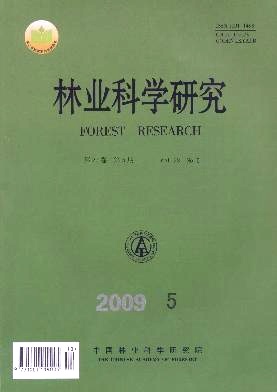|
[1]
|
徐纬英. 杨 树. [M]哈尔滨: 黑龙江人民出版社, 1988
|
|
[2]
|
中国杨树委员会. 中国国家报告[R]. 北京: 第23届国际杨树会议, 2008
|
|
[3]
|
陈章水. 杨树栽培实用技术[M]. 北京: 中国林业出版社, 2005
|
|
[4]
|
赵天锡, 陈章水. 中国杨树集约栽培[M]. 北京: 中国科学技术出版社, 1994
|
|
[5]
|
张绮纹, 李金花. 杨树工业用材林新品种[M]. 北京: 中国林业出版社, 2003
|
|
[6]
|
向玉英. 杨树病害及其防治[M]. 北京: 中国林业出版社, 1987
|
|
[7]
|
徐梅卿. 意大利杨树病害的发生和研究现状[C]. 北京:中国林业科学研究院林业研究所, 1985
|
|
[8]
|
李传道. 杨盘单格孢菌[M arssonina populi (Lib.) Magn]的两种专化型[J]. 南京林学院学报, 1984 (4) : 10 - 17
|
|
[9]
|
李桂林. 山东林木病害志[M]. 济南: 山东科学技术出版社, 2000
|
|
[10]
|
袁嗣令. 国内外杨树病害研究概况[C]. 北京:中国林业科学研究林业科学技术情报研究所, 1964
|
|
[11]
|
景 耀, 杨俊秀, 王培新. 杨树病害[M]. 西安: 陕西科学技术出版社, 1988
|
|
[12]
|
项存悌, 邵力平. 杨树病害综合防治技术(第一集) [M]. 哈尔滨: 东北林业大学出版社, 1992: 119 - 129, 137 - 149,220 - 225
|
|
[13]
|
戴玉成, 秦国夫, 徐梅卿. 中国东北地区的立木腐朽菌[J]. 林业科学研究, 2000, 13 (1) : 15 - 22
|
|
[14]
|
戴玉成, 范少辉, 魏玉莲, 等. 中国东北杨树上的木腐菌[J].林业科学研究, 2003, 16 (1) : 13 - 18
|
|
[15]
|
曹支敏, 李振歧. 秦岭锈菌[M]. 北京: 中国林业出版社, 1999
|
|
[16]
|
晁龙军, 朴春根, 曾大鹏. 杨树湿心材发生及危害的调查研究[J]. 林业科学研究, 1996, 9 (专刊) : 121 - 124
|
|
[17]
|
晁龙军, 曾大鹏, 孙福在, 等. 引起杨树湿心材的一种病原真菌((Fusarium proliferatum (Matsushima) Nirenberg[J]. 林业科学, 1998, 34 (5) : 69 - 73
|
|
[18]
|
程伯如, 罗晋灶. 江西植物类菌原体(MLO)病害调查[C] / /北京:中国植病学会六十周年纪念论文摘要汇编, 1989: 84
|
|
[19]
|
戴芳澜. 中国真菌总汇[M]. 北京: 科学出版社, 1979
|
|
[20]
|
戴玉成, 图力古尔. 中国东北野生食药用真菌图志[M]. 北京: 科学出版社, 2007
|
|
[21]
|
戴玉成. 林木病原腐朽菌图志[M]. 北京: 科学出版社, 2005
|
|
[22]
|
戴玉成. 中国储木及建筑木材腐朽菌图志[J]. 北京: 科学出版社, 2009
|
|
[23]
|
戴玉成. 用数量分类法讨论杨树栅锈菌的进化[J]. 林业科学研究, 1992, 5 (1) : 78 - 81
|
|
[24]
|
戴玉成, 沈瑞祥, 周仲铭. 北京地区木本植物锈菌区系的研究[J]. 林业科学研究, 1989, 2 (3) : 254 - 260
|
|
[25]
|
戴玉成, 沈瑞祥, 周仲铭. 杨树栅锈菌M elam psora spp. 的数量分类研究[M], 林业科学2003, 1989, 25 (1) : 86 - 91
|
|
[26]
|
邓叔群. 中国的真菌[M]. 北京: 科学出版社, 1963
|
|
[27]
|
郭英兰, 刘锡琎. 中国真菌志(第二十卷) ?菌绒孢属?钉孢属?色链隔孢属[M]. 北京: 科学出版社, 2003
|
|
[28]
|
姜俊清, 袁海生. 中国东北杨树上两种新多孔菌[J]. 林业科学研究, 2005, 18 (4) : 280 - 283
|
|
[29]
|
匡海源. 农螨学[M]. 北京: 农业出版社, 1986
|
|
[30]
|
刘惠珍. 中国主要树种病原名录[C]. 北京: 中国林业科学院林业研究所, 1982
|
|
[31]
|
刘锡琎, 郭英兰. 中国真菌志(第九卷) ?假尾孢属[M]. 北京: 科学出版社, 1998
|
|
[32]
|
尚衍重, 白淑兰, 卢晓岩. 内蒙古东部区杨树病害名录[J]. 华北农学报, 1986, 1 (4) : 79 - 82
|
|
[33]
|
邵力平, 沈端祥, 张素轩, 等. 真菌分类学[M]. 北京: 中国林业出版社, 1984
|
|
[34]
|
孙福在, 赵廷昌, 晁龙军, 等. 一种引起杨树湿心材的新病原细菌[J]. 林业科学研究, 2000, 13 (专刊) : 29 - 35
|
|
[35]
|
向玉英, 花晓梅, 赵经周. 杨树水泡型溃疡病的病原菌鉴定[J]. 微生物学报, 1979, 19 (1) : 57 - 63
|
|
[36]
|
向玉英, 徐梅卿. 杨树紫根腐病发生及防治的研究[J]. 植物病理学报, 1980, 10 (2) : 125~131, 137 - 138
|
|
[37]
|
向玉英. 杨树花叶病毒的调查研究[J]. 林业科技通讯, 1982(9) : 27 - 29
|
|
[38]
|
徐志华. 果树林木病害生态图签[M]. 北京: 中国林业出版社, 2000
|
|
[39]
|
徐梅卿, 何平勋. 中国木本植物病原总汇[M]. 哈尔滨: 东北林业大学出版社, 2008
|
|
[40]
|
袁嗣令. 中国乔、灌木病害[M]. 北京: 科学出版社, 1997
|
|
[41]
|
张天宇. 中国真菌志(第十六卷) ?链格孢属[M]. 北京: 科学出版社, 2003
|
|
[42]
|
张中义. 中国真菌志(第十四卷) ?枝孢属?黑星孢属?梨孢属[M]. 北京: 科学出版社, 2003
|
|
[43]
|
赵文霞, 杨宝君. 中国植物线虫名录[M]. 北京: 中国林业出版社, 2006
|
|
[44]
|
郑儒永, 陈桂清. 中国钩丝壳属的分类研究Ⅴ. 金缕梅科、蝶形花科、芸香科和杨柳科上的新种和新变种[J]. 微生物学报,1981, 21 (3) : 298 - 307
|
|
[45]
|
钟兆康, 高 雅. 杨树水泡型溃疡病的致病性研究[J]. 植物病理学报, 1981, 11 (2) : 53 - 56
|
|
[46]
|
钟兆康. 杨树疡壳孢溃疡病的研究[J]. 东北林学院学报,1982 (2) : 63 - 69
|
|
[47]
|
中国林学会森林病理分会. 全国针阔叶树病害学术讨论会论文集[C]. 南京, 1999
|
|
[48]
|
中国科学院中国植物志编辑委员会. 中国植物志(第二十四卷) [M]. 北京: 科学出版社, 1988
|
|
[49]
|
中国科学院中国植物志编辑委员会. 中国植物志(第六十四卷第一分册) [M]. 北京: 科学出版社, 1979: 143 - 153
|
|
[50]
|
中华人民共和国林业部林政保护司. 中国森林病虫普查名录(下册) [C]. 北京, 1988
|
|
[51]
|
Hawksworth D L, Kirk P M, Sutton B C, et al. Ainsworth &BisbypsDictionary of the Fungi [M]. Eighth Edition. Cambridge:UK at the University Press, 1955 |





 DownLoad:
DownLoad: